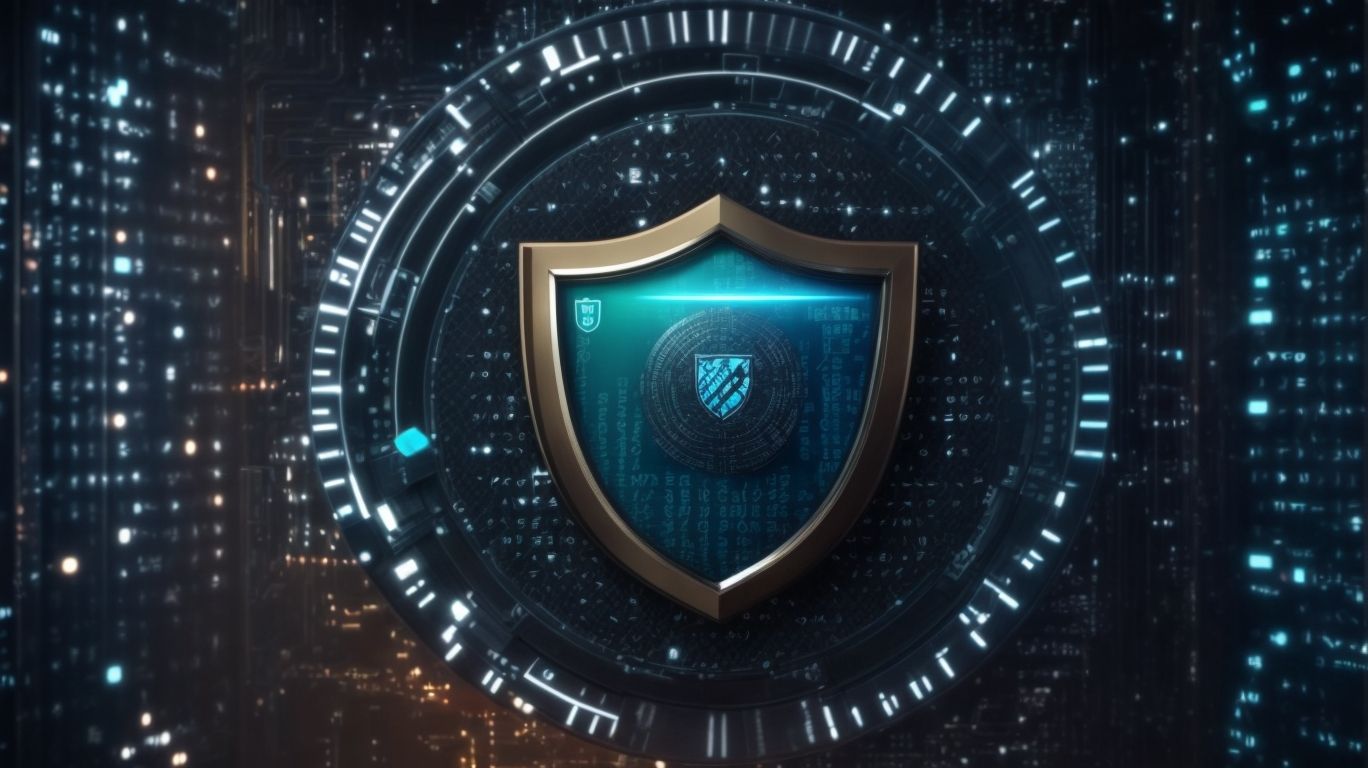Cybersecurity is a crucial aspect of our digital world today, protecting us from various cyber threats and attacks.
We explore what cybersecurity is, why it is important, and the different types of cybersecurity. We will also delve into the components of a comprehensive cybersecurity strategy, including risk assessment, employee training, data encryption, and more.
Discover how to develop a strong cybersecurity strategy to safeguard your assets and information effectively.
Table of Contents
Key Takeaways:
Cybersecurity is crucial in protecting digital assets and preventing cyber attacks.A comprehensive cybersecurity strategy includes risk assessment, employee training, data encryption, and multi-factor authentication.To develop an effective cybersecurity strategy, it is important to identify assets, assess risks, develop policies, implement security controls, and continuously update the strategy.
What is Cybersecurity?
Cybersecurity encompasses the practices, technologies, and processes designed to protect data, systems, and networks from cyber threats.
Valuable information stored in digital platforms has become a prime target for cybercriminals, who exploit vulnerabilities in online systems. Various types of cyber attacks, such as malware, phishing, ransomware, and DDoS attacks, pose significant risks to the confidentiality, integrity, and availability of sensitive data. Businesses and organizations are increasingly investing in robust cybersecurity measures to mitigate these threats and safeguard their operations. Establishing strong password policies, implementing encryption protocols, conducting regular security audits, and providing employee training on cyber awareness are essential components of a comprehensive cybersecurity strategy.
Why is Cybersecurity Important?
Cybersecurity is crucial for businesses and organizations to mitigate risks, safeguard sensitive data, and counter evolving cyber threats.
Without adequate cybersecurity measures, businesses are vulnerable to data breaches, ransomware attacks, and other malicious activities that can disrupt operations and damage reputations. Read more about the importance of a comprehensive cybersecurity strategy.
Implementing proactive security measures such as firewalls, encryption, and multi-factor authentication can help prevent unauthorized access and protect critical information.
Having a comprehensive risk management strategy in place allows organizations to identify potential threats, assess their potential impact, and prioritize resources to address vulnerabilities.
In case of a cybersecurity incident, a well-defined response plan can help minimize damage, facilitate a quick recovery, and maintain trust with customers, partners, and stakeholders.
What are the Types of Cybersecurity?
Cybersecurity comprises various types, including network security, application security, information security, operational security, and disaster recovery and business continuity planning.
Network security focuses on protecting an organization’s internal network infrastructure from unauthorized access and attacks.
Application security involves securing software and web applications to prevent vulnerabilities that could be exploited by cybercriminals.
Information security safeguards the confidentiality, integrity, and availability of sensitive data.
Operational security includes procedures and controls to safeguard hardware, software, and data from internal threats.
Disaster recovery and business continuity planning focus on strategies and protocols to maintain operations during and after a cyber incident.
Network Security
Network security focuses on protecting the network infrastructure, preventing unauthorized access, and implementing robust security measures to safeguard data transmission.
In the realm of cybersecurity, the importance of network security cannot be overstated. It serves as the vital first line of defense against cyber threats, such as malware, viruses, and hacking attempts. Technologies such as firewalls, intrusion detection systems, and encryption protocols play a crucial role in fortifying networks against potential vulnerabilities. Access controls, ranging from password authentication to multi-factor authentication, add layers of security to ensure that only authorized individuals can access sensitive information.
Continuous monitoring, regular security audits, and timely updates are essential aspects of managing network security effectively. Organizations must also educate their employees about best practices and potential risks to foster a culture of cybersecurity awareness.
Application Security
Application security is essential for identifying and mitigating vulnerabilities in software applications, implementing preventive measures, and establishing effective controls.
Regarding cybersecurity strategies, application security plays a crucial role in protecting systems and data from potential threats. Conducting regular vulnerability assessments is key to discovering weak points within the application that could be exploited by malicious actors. By identifying these vulnerabilities early on, developers can proactively address them through prevention techniques such as secure coding practices, input validation, and encryption.
Implementing robust control mechanisms is essential for secure application development. This includes enforcing strict access controls, implementing proper authentication mechanisms, and conducting regular security testing to identify and mitigate any emerging threats.
Information Security
Information security involves safeguarding data integrity, confidentiality, and availability through encryption, regulatory compliance, and protective measures.
Encryption plays a crucial role in securing sensitive information by converting data into a format that can only be read with the corresponding decryption key, thus preventing unauthorized access.
Compliance with regulatory requirements is essential for organizations to adhere to industry standards and safeguard against potential legal repercussions. Protective measures such as firewalls, intrusion detection systems, and access controls contribute to creating a robust defense system against cyber threats.
Operational Security
Operational security focuses on ensuring effective incident response, leveraging technology solutions, and establishing controls to mitigate risks and vulnerabilities.
Operational security is a crucial aspect in the realm of cybersecurity, acting as the frontline defense against potential threats and attacks. When a security incident occurs, a well-defined incident response plan kicks into action, swiftly identifying the source of the breach and containing its impact. Technology plays a pivotal role in facilitating real-time monitoring, threat detection, and rapid incident resolution. Implementing robust risk mitigation controls like access restrictions, encryption protocols, and regular security audits fortifies the overall security posture of an organization.
Disaster Recovery and Business Continuity Planning
Disaster recovery and business continuity planning are vital components of cybersecurity, ensuring organizations can respond effectively to cyber incidents and maintain operational resilience.
Regarding disaster recovery, organizations need to establish robust response strategies to minimize the impact of cyberattacks or system failures. This involves creating detailed plans for data backup, restoration procedures, and alternative communication channels to ensure business operations can quickly resume.
On the other hand, business continuity planning focuses on implementing measures to sustain core functions during disruptions, such as remote work protocols, supply chain diversification, and training employees on incident response protocols.
By integrating both disaster recovery and business continuity planning into their cybersecurity frameworks, organizations can enhance their organizational resilience and mitigate risks posed by cyber threats.”
What are the Components of a Comprehensive Cybersecurity Strategy?
A comprehensive cybersecurity strategy includes components such as risk assessment, employee training, data encryption, and multi-factor authentication to enhance security posture.
Conducting a thorough risk assessment is crucial to identify potential vulnerabilities and threats that may compromise the organization’s sensitive data. Employee awareness plays a vital role in ensuring that individuals understand best practices to thwart cyber attacks, making regular training sessions imperative. Utilizing advanced encryption methods like asymmetric encryption or hashing algorithms safeguards data from unauthorized access. Implementing stringent authentication protocols like biometric identification or token authentication strengthens the defense against unauthorized intrusion attempts.
Risk Assessment
Risk assessment is a critical component of cybersecurity strategies, enabling organizations to identify vulnerabilities, assess threats, and implement protective measures.
By conducting a thorough vulnerability identification process, organizations can pinpoint weak points in their systems that could be exploited by malicious actors. This involves evaluating software, hardware, network infrastructure, and human factors that could pose security risks.
Once vulnerabilities are identified, organizations can move on to threat analysis, where they examine the likelihood and potential impact of different cyber threats. This step helps prioritize risks based on their severity and likelihood of occurrence.
Following threat analysis, organizations can develop tailored risk mitigation measures to address the identified threats effectively. These measures may include implementing security protocols, training employees on cybersecurity best practices, employing advanced threat detection tools, and establishing response plans in case of a security incident.
By integrating risk assessment into their cybersecurity planning, organizations can proactively protect their assets and data from cyber threats, minimizing the potential impact of attacks.”
Employee Training and Awareness
Employee training and awareness programs play a key role in cybersecurity initiatives, enableing staff to recognize threats, respond effectively, and safeguard organizational assets.
By investing in employee training and awareness programs, organizations create a proactive defense against cyber threats, building a strong foundation for their security posture.
Through these programs, employees develop the skills to identify suspicious activities, such as phishing attempts or malware infections, and understand the appropriate steps to take in case of a security incident.
Cultivating a culture of cyber awareness among staff not only protects the organization’s sensitive data but also enhances overall resilience against evolving cyber threats.
Regular Updates and Patches
Regular updates and patches are essential for maintaining cybersecurity resilience, addressing software vulnerabilities, and preventing potential cyber threats.
Implementing a robust vulnerability management system is crucial in identifying and assessing weaknesses within the network infrastructure. Understanding the patch deployment strategies can help organizations prioritize critical updates and secure their systems effectively. It is paramount to stay vigilant and proactive in applying these security measures to mitigate risks associated with cyber attacks. By regularly updating software and promptly applying patches, businesses can significantly reduce the likelihood of being targeted by malicious actors.
Data Encryption
Data encryption is a fundamental cybersecurity measure that safeguards sensitive information, enhances data protection, and ensures secure data transmission.
One of the key aspects of data encryption is its ability to render data unreadable to unauthorized parties through complex mathematical algorithms. By converting plaintext information into ciphertext, encryption ensures that even if data is intercepted, it remains unintelligible without the decryption key.
Different encryption techniques, such as symmetric and asymmetric encryption, play crucial roles in securing information at rest and in transit. Encryption is integral to various data protection mechanisms, including secure sockets layer (SSL) and transport layer security (TLS), which establish secure connections between parties.
These encryption protocols are essential for secure communication practices, especially in online transactions, email exchanges, and remote access to sensitive data.
Multi-factor Authentication
Multi-factor authentication strengthens cybersecurity defenses by requiring multiple credentials for user access, enhancing identity verification and access control.
By utilizing multiple factors such as something the user knows (like a password), something they have (like a smartphone for receiving OTPs), and something they are (like biometric data), multi-factor authentication significantly reduces the risk of unauthorized access and data breaches.
This heightened level of security adds layers of defense to sensitive information and systems, making it more challenging for cybercriminals to compromise user accounts and steal valuable data.
How to Develop a Comprehensive Cybersecurity Strategy?
Developing a comprehensive cybersecurity strategy involves identifying assets, assessing risks, establishing policies, implementing security controls, and continuously monitoring the strategy.
Asset prioritization is the initial step in creating a robust cybersecurity plan. Begin by identifying which assets are most critical to your organization’s operations. These could include customer data, intellectual property, or key infrastructure components. Utilize tools such as asset inventory lists to categorize assets based on their importance and vulnerability to potential threats.
Once assets are prioritized, move on to conducting thorough risk assessments. These assessments involve identifying potential threats, vulnerabilities, and the likelihood of a cyber attack. Determine the impact these risks could have on your organization’s operations and reputation. Utilize techniques such as penetration testing, vulnerability scanning, and simulated attacks to gauge your system’s resilience.
Identify and Prioritize Assets
Identification and prioritization of assets are essential steps in cybersecurity strategy development, helping organizations focus on critical resources, vulnerabilities, and risk areas.
Regarding asset categorization, it involves classifying assets based on their importance, sensitivity, and relevance to the organization’s operations. This process allows for a clear understanding of which assets require the highest level of protection.
Conducting risk assessment methodologies helps in evaluating potential threats and vulnerabilities that could impact the assets. This could include qualitative and quantitative assessments to determine the likelihood and impact of various risks.
Asset valuation techniques play a crucial role in assigning a monetary value to assets, aiding in making informed decisions regarding risk mitigation measures and resource allocation. By understanding the value of assets, organizations can prioritize their protection efforts effectively.
Assess Risks and Vulnerabilities
Risk and vulnerability assessment is crucial for cybersecurity strategy development, enabling organizations to identify potential threats, assess vulnerabilities, and implement mitigation measures.
By conducting a comprehensive risk and vulnerability assessment, organizations can gain valuable insights into their cybersecurity posture, allowing them to prioritize resources effectively.
Through threat identification, businesses can pinpoint existing and emerging risks, helping them stay one step ahead of potential cyber threats.
By performing vulnerability analysis, companies can uncover weak points in their defense mechanisms, enabling them to proactively address vulnerabilities before they can be exploited.
Implementing risk mitigation strategies based on the findings of assessments can significantly enhance an organization’s overall security resilience.
Develop Policies and Procedures
Establishing robust policies and procedures is essential for cybersecurity governance, guiding organizations in effective response protocols, incident handling, and security enforcement.
These policies serve as a strategic roadmap for organizations to navigate the complex cyber threats landscape. By outlining clear guidelines for incident management procedures and establishing proactive measures to prevent security breaches, companies can strengthen their defense mechanisms against potential cyber attacks. This structured approach not only enhances overall security posture but also ensures compliance with industry regulations and standards, such as GDPR, HIPAA, and PCI DSS, thereby safeguarding sensitive data and maintaining customer trust.
Implement Security Controls
Security controls play a vital role in cybersecurity defense mechanisms, leveraging technology solutions, access controls, and preventive measures to safeguard critical assets.
Effective security controls are crucial for organizations to mitigate cyber threats and protect sensitive information from potential breaches. Implementing a robust cybersecurity framework involves a comprehensive approach that includes intrusion detection systems, firewalls, encryption protocols, and multi-factor authentication.
- Regular security audits and vulnerability assessments help identify potential weaknesses in the system, allowing for prompt remediation before they can be exploited by malicious actors.
Access management strategies such as role-based access control and least privilege principle ensure that only authorized personnel can access sensitive data, reducing the risk of insider threats.
Continuously Monitor and Update Strategy
Continuous monitoring and strategy updates are essential for adapting to evolving cyber threats, assessing security effectiveness, and optimizing cybersecurity measures.
One key aspect of continuous monitoring is the integration of threat intelligence, which involves gathering and analyzing information about potential and current threats. By staying informed about the latest tactics and trends used by cybercriminals, organizations can proactively fortify their defenses.
Performance evaluation plays a crucial role in cybersecurity. Regularly assessing the efficiency of security measures allows for the identification of weaknesses and areas for improvement. This data-driven approach enables organizations to make informed decisions on where to allocate resources for maximum impact.
Strategy refinement is a dynamic process that involves adapting security protocols based on evolving threats and changing business needs. Through continuous monitoring, organizations can fine-tune their strategies to maintain a strong security posture. https://www.youtube.com/embed/78ESL84uChc
Frequently Asked Questions
What is a Comprehensive Cybersecurity Strategy and why is it important?
A Comprehensive Cybersecurity Strategy is a plan that outlines the measures and protocols that an organization or individual will take to protect their digital assets from cyber threats. It is important because it helps to safeguard sensitive information, prevent cyber attacks, and maintain trust with customers and stakeholders.
What are the key components of a Comprehensive Cybersecurity Strategy?
The key components of a Comprehensive Cybersecurity Strategy include risk assessment, threat detection and prevention, incident response and recovery, employee training and awareness, and regular updates and maintenance. These elements work together to create a strong defense against cyber threats.
How does a Comprehensive Cybersecurity Strategy help businesses and organizations?
A Comprehensive Cybersecurity Strategy can help businesses and organizations by protecting their sensitive data and systems from cyber attacks, minimizing the risk of financial loss and reputational damage, and ensuring compliance with industry regulations and standards. It also helps to maintain the trust of customers and partners.
Why is it important for individuals to have a Comprehensive Cybersecurity Strategy?
Individuals are also vulnerable to cyber threats, such as identity theft and financial fraud. A Comprehensive Cybersecurity Strategy helps individuals protect their personal information, devices, and online accounts from these threats, allowing them to use technology safely and securely.
How can a Comprehensive Cybersecurity Strategy be tailored to different industries and organizations?
A Comprehensive Cybersecurity Strategy should be customized to fit the specific needs and risks of each industry and organization. Different industries may face different types of cyber threats, and organizations of different sizes and structures may require different levels of protection. It is important to assess and address individual vulnerabilities in order to create an effective strategy.
What are the potential consequences of not having a Comprehensive Cybersecurity Strategy?
The consequences of not having a Comprehensive Cybersecurity Strategy can include financial loss, damage to reputation and trust, legal liabilities, and disruption of business operations. It can also lead to data breaches and stolen information, which can have long-term consequences for both individuals and organizations.







